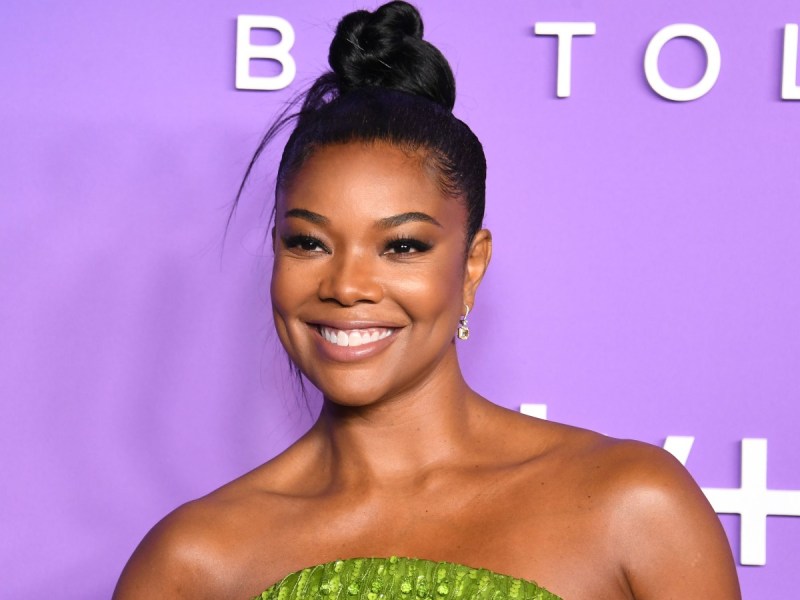Gabrielle Union sparkled on the red carpet for the January 19 premiere of Truth Be Told. Showing off a glitzy gown at the show’s season three premiere, Union gave us major flashbacks to the forgotten fashion trend of color blocking.
Videos by Suggest
Color-Block Cuteness

On the red carpet, the actress wore a color-block, beaded Prada dress that descended from top to bottom in three colors. Starting with lime green, the dress then turned to pink and finally to black with a glittery skirt that plunged to the floor.
Letting the outfit speak for itself, Union accessorized with dangling gemstone earrings and several statement rings in gold and silver. She also nailed her evening-ready look with a smokey eye and nude matte lip. To top it off, Union wore her hair in an intricate bun.
Although Union looked glamorous from head to toe, we can’t get over how her look is signaling the return of the color block fashion trend. For those of us who grew up in the ’90s, it’s a fashion statement we remember making.
Everyone Was Wearing It In The ’90s
If you were a child, teen, or young adult in the ’90s, odds are that you had at least one color block item in your wardrobe. From windbreakers and aerobic leotards to oversized jackets and patchwork jeans, you were all that and a bag of chips in your color-block clothing.
Pairing together primary colors and even neon hues, people donned the color block look on-screen, on stage, and even at school. Musicians and actors, such as Will Smith and Salt-N-Pepa, made the trend famous. This isn’t surprising since the ‘90s version was a continuation of the ’80s color-block look that took shape thanks to many hip-hop artists.
The Trend Has Its Roots In Modern Art Movement
While we’re familiar with the ’90s look, color blocking in fashion became famous in the 1960s. In 1965, French fashion designer Yves Saint Laurent created a collection of six dresses that were inspired by the abstract art of Dutch painter Piet Mondrian. The dresses included bold black lines with blocks of white and primary colors, a take on Mondrian’s artwork.
Although Laurent typically receives credit for bringing color blocking to fashion, two other designers used the technique before Laurent. Another French designer, Michèle Rosier, made similar dresses in the 1960s. Plus, in 1963, American designer John Kloss created dresses with the color block technique.
Regardless of when the first color-block dress was invented, we hope that the updated version of the color block is here to stay.
